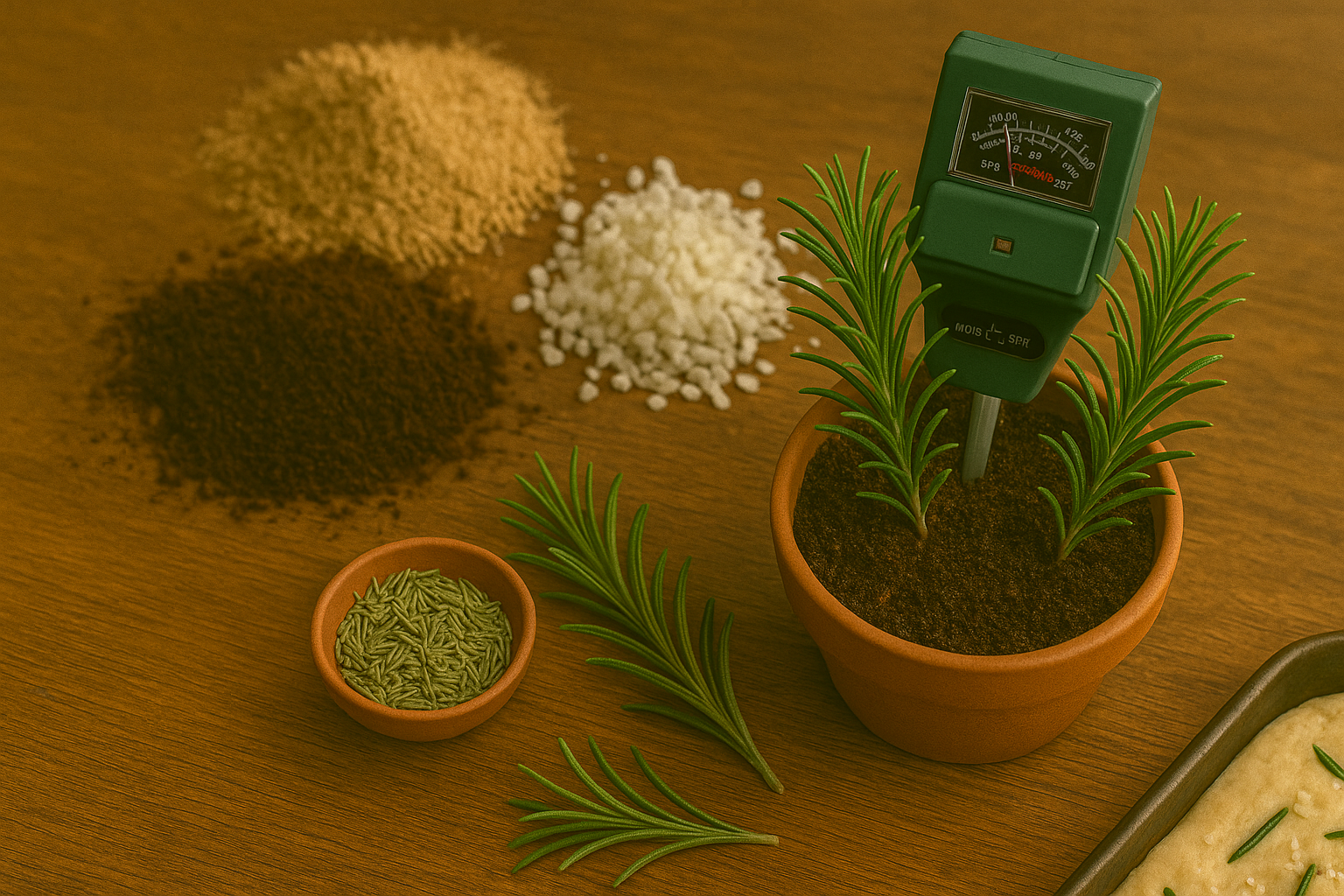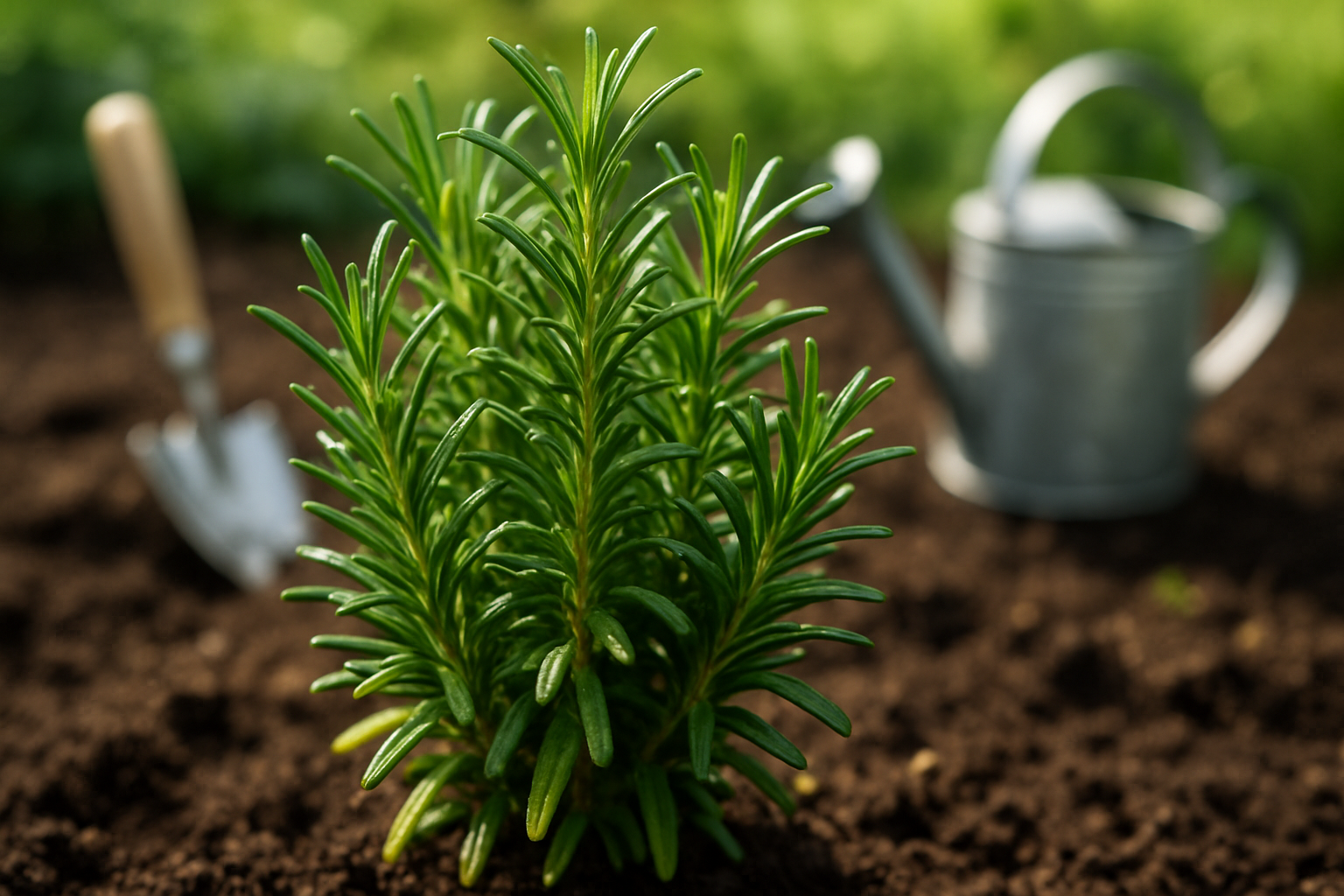Understanding Why Rosemary Leaves Turn Yellow

Yellowing leaves on a rosemary plant are a common and frustrating problem for both new and experienced gardeners. It’s important to address this issue quickly to prevent more serious problems. If left untreated, yellowing can slow the plant’s growth and even diminish the robust, aromatic flavor rosemary is known for in the kitchen.
Several factors could be causing the yellowing, so pinpointing the root cause is essential.
Common Causes of Yellowing Rosemary Leaves
- Overwatering or Poor Soil Drainage: These conditions often leave rosemary roots sitting in soggy soil, depriving them of oxygen. This is a leading reason for yellow leaves.
- Inadequate Sunlight: Rosemary thrives on at least six hours of direct sunlight per day. Insufficient light can weaken the plant.
- Poor Cultivation Practices: Using heavy fertilizers or crowding the plant with others can cause nutrient imbalances or restrict airflow, both of which may lead to yellowing leaves.
Tips for Healthy Rosemary Growth
Rosemary prefers well-draining soil and doesn’t require as much water as other herbs, so allowing its roots to dry out between waterings is key. Regularly check your plant’s growing environment and adjust your care routine as needed to ensure a healthy, flavorful rosemary bush.
Major Causes of Yellowing Rosemary Leaves
Yellowing rosemary leaves can be frustrating for gardeners, but identifying the cause is key to reviving your plant. Overwatering is a common culprit—rosemary prefers its soil to be on the drier side, so soggy soil can quickly lead to root rot, causing leaves to turn yellow and mushy at the base. Make sure your pot or garden bed has well-draining soil and never let the plant sit in standing water.
On the flip side, underwatering might stress rosemary, resulting in dry, crispy, yellowing leaves, especially at the tips. Find a balance by letting the soil dry slightly between thorough waterings.
Nutrient deficiencies can also cause problems:
- A lack of nitrogen often leads to uniform yellowing throughout older leaves.
- Magnesium shortages might appear as yellowing between veins.
Feeding your rosemary with a balanced, diluted fertilizer a few times during the growing season can help, but don’t overdo it—too much fertilizer can harm more than help.
Environmental factors also play a role. Temperature swings, especially sudden drops, can shock rosemary, leading to leaf yellowing or even leaf drop. Try to keep rosemary in a stable spot away from cold drafts. Insufficient sunlight is another common issue—rosemary craves at least 6-8 hours of sunlight daily.
Lastly, after moving or repotting your plant, it may show yellow leaves due to transplant shock. In this case, patience and gentle care—reducing stress and maintaining a steady routine—will give your rosemary the best chance at a healthy recovery.
Recognizing Pest and Disease Problems
Spotting the signs of pests and diseases early can save your plants from serious damage. Look closely at leaves and stems for tiny insects like aphids, which often gather in clusters on new growth and leave behind sticky residue.
Spider mites are another common culprit. If you see fine webbing between leaves and yellow, speckled marks, you might have an infestation. Distorted, curled, or yellowing leaves also signal trouble—sometimes caused by sap-sucking insects, and other times by fungal or bacterial diseases.
Powdery mildew, for example, forms a white or gray powder on leaf surfaces and can stunt growth. Root rot, caused by fungi or bacteria in overly wet soil, leads to wilting and yellowing despite proper watering.
For the best chance at early detection, inspect your plants often—check the undersides of leaves, stems, and even the soil surface. Use a magnifying glass if needed and take note of repeating damage patterns:
- Scattered spots usually mean pests.
- Uniform yellowing often hints at a disease or root issue.
Being observant and responding quickly is key to keeping your plants healthy and resilient.
Fixing Watering and Soil Issues

Getting your rosemary’s watering routine right is key to avoiding common problems like root rot or stunted growth. Let the top inch of soil dry out completely before watering again—rosemary hates sitting in soggy soil. Always use pots with drainage holes to ensure excess water can escape. If you’re growing rosemary outdoors, make sure your garden bed or spot doesn’t stay wet after rain.
Choosing the right soil is just as important. Rosemary thrives in a potting mix that’s loose and airy. Try blending regular potting soil with sand or perlite in a 2:1 ratio to improve drainage.
If your rosemary’s leaves turn yellow or the plant looks wilted despite regular watering, you might have a drainage issue. Check for compacted or waterlogged soil. If you find either, gently remove the plant from its container, shake off the wet soil, and replant it in fresh, well-draining mix. For garden beds, mix in coarse sand or fine gravel to enhance water movement.
Repotting rosemary every couple of years can also refresh the soil and prevent roots from becoming overcrowded. These small changes can make a big difference in keeping your rosemary healthy and thriving.
Addressing Nutrient Deficiencies
Distinguishing nutrient deficiencies in plants can be tricky since symptoms like yellow leaves or stunted growth might also indicate pests, diseases, or improper watering. One way to tell is by looking for specific patterns—yellowing that starts at the leaf tips and edges may suggest nitrogen deficiency, while purpling of older leaves could point to a lack of phosphorus.
Always inspect your plants closely and consider their environment before jumping to conclusions. If you suspect a deficiency, start by testing your soil, either with an at-home kit or through a local extension service, to confirm which nutrients are lacking.
Address deficiencies by adding targeted fertilizers; for example, a balanced slow-release fertilizer or natural amendments like compost can provide a steady nutrient supply. Adjusting soil pH is also crucial since extreme acidity or alkalinity can block nutrient uptake—lime can raise pH, while sulfur can lower it.
Avoid the temptation to over-fertilize, which can harm plants and the environment. Instead, feed according to your plant’s needs and label recommendations, generally every 4-6 weeks during the growing season. Regularly monitor your garden’s progress and adjust your approach as needed for healthier, stronger plants.
Preventing Future Yellowing and Keeping Your Rosemary Healthy
To keep your rosemary vibrant and prevent future yellowing, develop a consistent care routine tailored to its needs. Start with regular pruning—this not only keeps your plant bushy and productive but also improves airflow, reducing the risk of fungal issues.
Inspect your rosemary weekly for signs of pests like aphids or spider mites, especially on the undersides of leaves. Early detection makes treatments much easier and more effective.
Every couple of weeks, gently rotate potted plants to ensure even light exposure, preventing leggy growth and sunburn on one side.
Adapt your maintenance throughout the year:
- For indoor rosemary, reduce watering in winter when growth slows and ensure it stays by a sunny window, as short daylight hours can stress the plant.
- Outdoors, protect your rosemary from frost with burlap wraps or by moving containers close to a sheltered wall. Consider using mulch to insulate roots if your winters are harsh.
Finally, make it a habit to check your rosemary for early signs of yellowing or stress while you water. Catching issues early lets you adjust watering, light, or soil conditions before the plant suffers long-term damage.
By following these steps, you’ll keep your rosemary healthy, fragrant, and green year-round.
